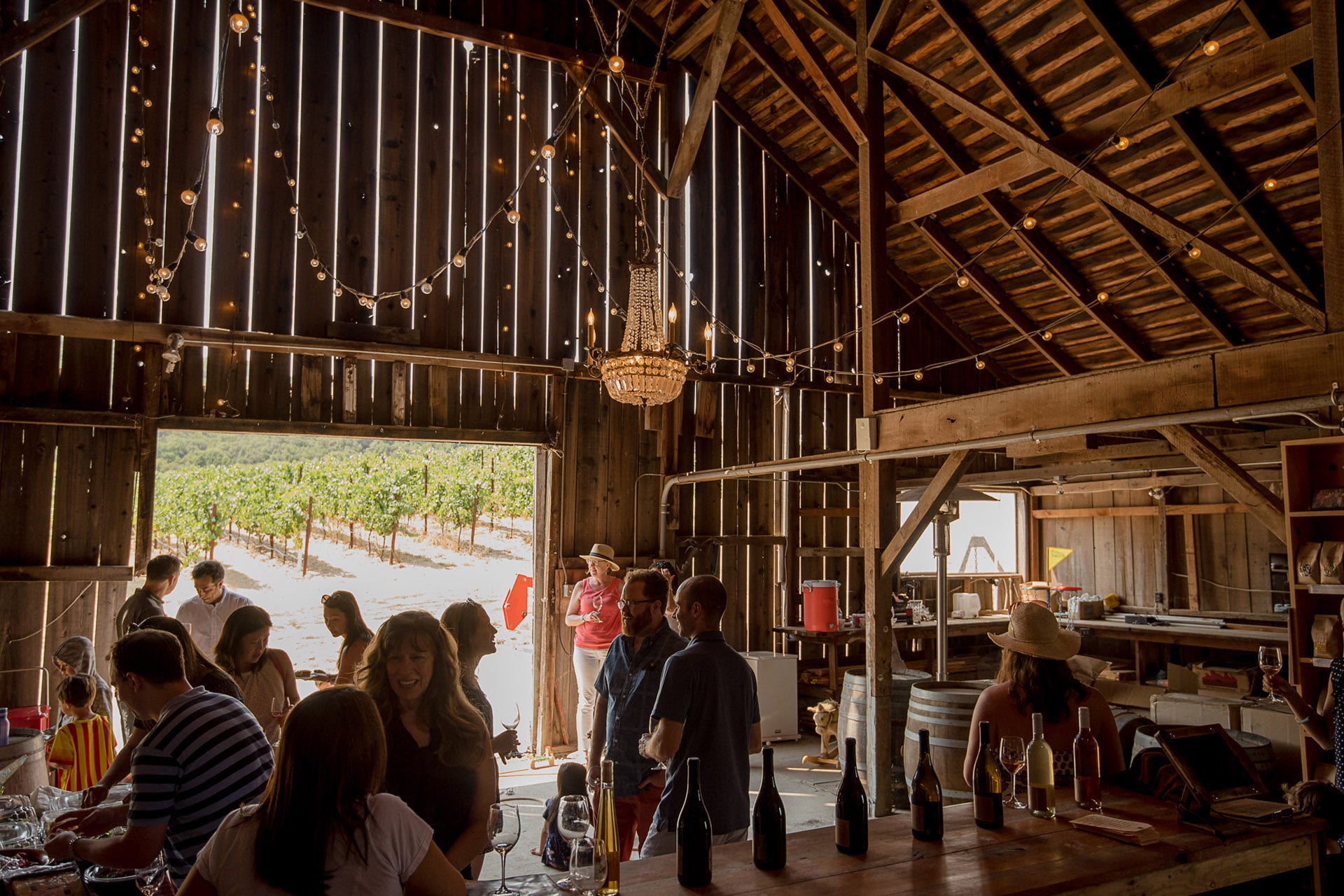The Prisoner Wine Company is scheduled to open its doors this October along Highway 29 in Napa Valley. When it does, it will make a statement.
A popular brand for nearly 20 years, The Prisoner is known for its namesake big, bold blend and iconic label art, as well as wines like The Snitch, Cuttings and Dérangé under the general California appellation.
But The Prisoner has never had a home open to the public. Owned by Constellation Brands since 2016, The Prisoner Tasting Lounge and The Makery will plant its roots in the heart of Napa Valley, where it will occupy the St. Helena tasting space formerly home to Franciscan Estate.

The Prisoner’s Makers’ Hall will have four studios, each occupied by a “maker in residence” whose expertise will include art, music, design and cuisine, an environment “specifically designed to…challenge the wine-country status quo,” according to the company. The first set of makers will be Soap Cauldron, Wine Lover’s Jelly, Bayview Pasta and Amanda Wright Pottery.
The brand claims on its website, “We’ve reimagined the traditional tasting room by creating a comfortable lounge experience free from pomp and circumstance…a lounge is where we can be ourselves.”
Many of Napa Valley’s 3.5 million yearly visitors appear to want different things out of a winery experience than in days of old: More sit-down tastings, food pairings and places to hang out and Instagram their day. That’s not to mention more of a sense of belonging.

Scribe Winery, just over the Sonoma county line, created a more immersive experience for visitors years ago, and it has legions of devoted fans to show for it.
“What attracts people to Scribe and other wineries and farms is that they get to connect to the natural world and to the landscape,” says co-owner Andrew Mariani.
Scribe offers a relaxed, natural setting that overlooks its vineyards, where visitors often picnic under the trees.
“We’re stripping away what a tasting room was to have a simple, transparent experience that connects people to a place,” says Mariani. “They’re tasting wines from vines growing out front, having snacks from the gardens here. [Through that], the story of a place is being expressed and shared. It’s a really simple idea.”
Back to the Land
As a wine culture, are we now confident enough to dictate what we want out of a visit, rather than letting a winery decide? And do younger visitors want something other than the same-old tasting rooms of their parents’ generation?
“There was a perception historically of what high-quality looked like,” says Mariani. “You can have a casual, more agrarian experience and still signify a high-quality product.”
There’s no doubt that the status quo can be a less-than-inspiring experience. Crowded, perfumed, snack-less and staffed at times by indifferent hosts, the traditional tasting room can be a rotten place to learn about and taste wine.
Visit several of these kinds of tasting rooms in a day? Good luck remembering any of the wines.

With her husband, Nate, Lauren Belden founded Belden Barns, an estate vineyard and farmstead on Sonoma Mountain, and wanted to turn the traditional tasting room model on its head. With a background in brand strategy and innovation, Lauren gathered wine friends and their friends to ask what they love, hate and wish was different about wine tasting.
“People told us at the end of a day or weekend wine tasting [that] it’s often hard to remember even a single name or detail of any of the wineries, there’s so much similarity between tasting rooms,” she says. “They also would love more opportunities to connect with nature, wondering why more wineries don’t offer hiking trails to explore after tasting.”
The Beldens seek to offer visitors a hands-on, immersive, custom wine experience. They want to create a so-called “tasting realm,” where folks can dig their hands in the soil, learn a skill, go on a scavenger hunt or just explore the property.
“While many tasting rooms leave customers feeling like they are being funneled in and out the door, our goal is to have people come and spend the day with us. Linger,” she says.

Ashes & Diamonds, just outside of Napa, plans to kick off a series of Q&A conversations in September. Randy Dunn, Randall Grahm and Ted Lemon are among the featured speakers.
At Ackerman Heritage House, a Queen Anne Victorian in downtown Napa built in 1888, you can take a cookie or pie baking class or enjoy afternoon tea.

Cliff Lede in Yountville has a Backstage Lounge available by reservation. There, visitors can hang out amidst rock memorabilia, take in art exhibits like one from former Jefferson Airplane singer Grace Slick, listen to classic tunes and enjoy access to limited production wines.

At Raymond, become winemaker for a day in the blending room or immerse yourself in the velvet-lined Red Room, by appointment only. Visitors can also peruse the two-acre Theater of Nature, a showcase of biodynamic farming that features live animals.

Tour the gardens and enjoy nature among the chickens and bees at Wheeler Farms in St. Helena. After, sit down and taste Wheeler’s wines, as well as those of several custom-crush clients onsite like Arrow & Branch, Accendo, Kinsman and TOR.
Last Updated: May 4, 2023















